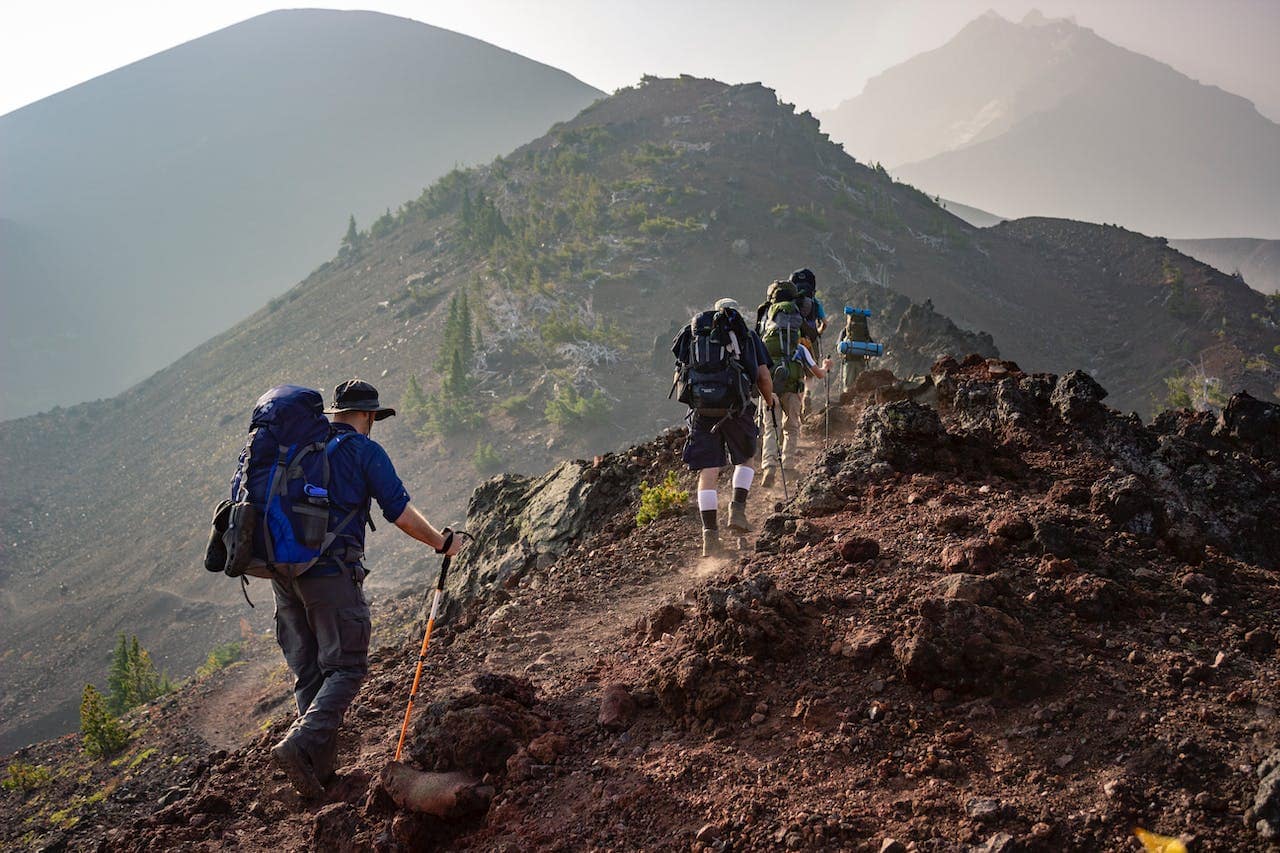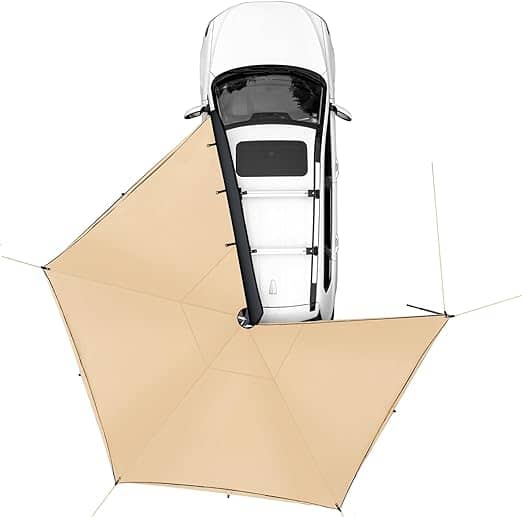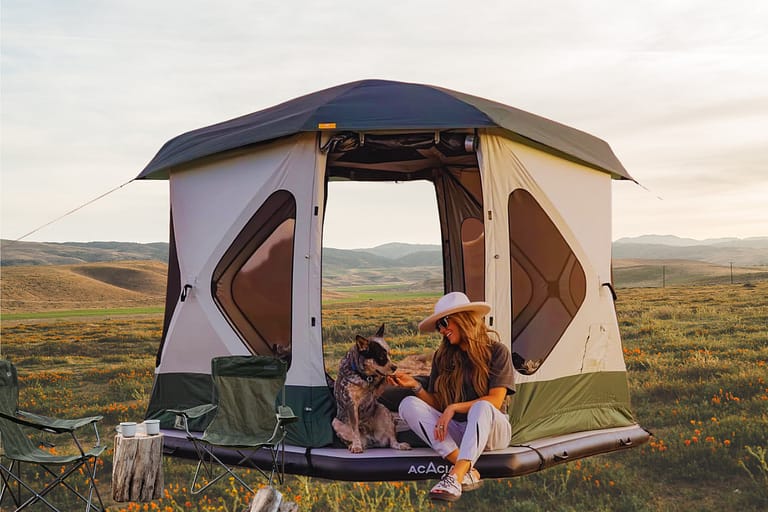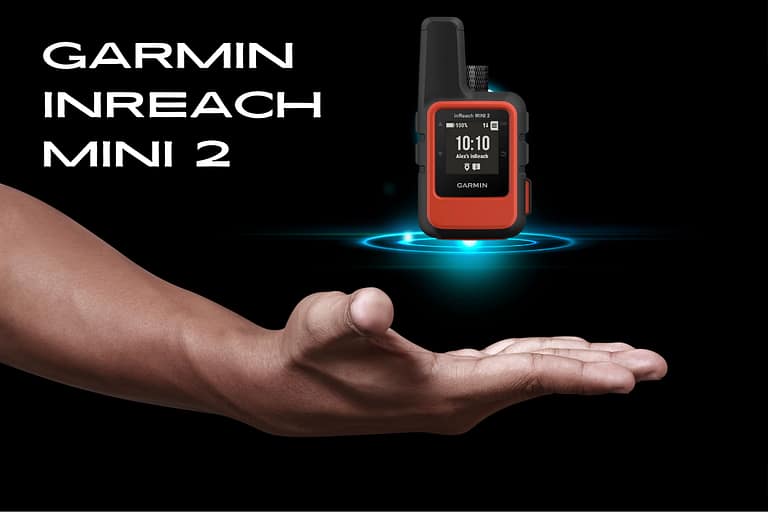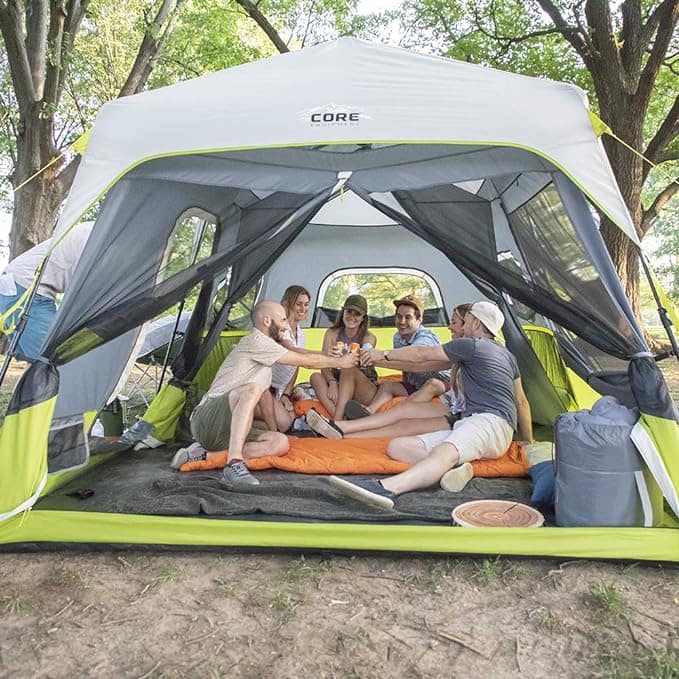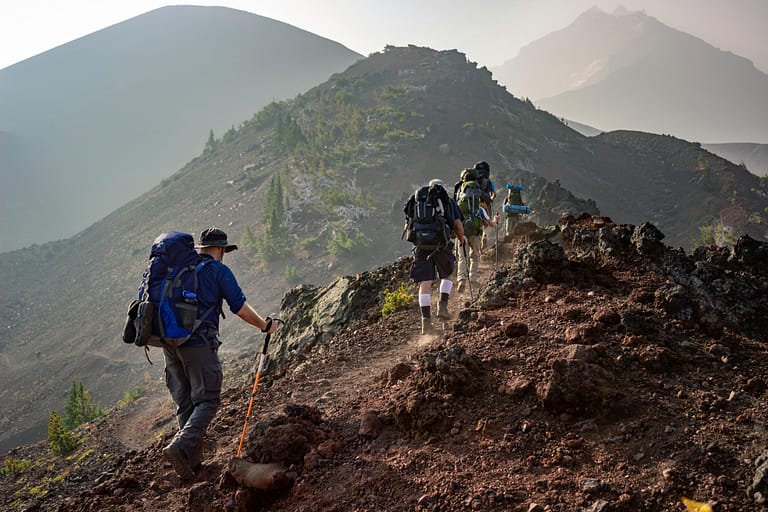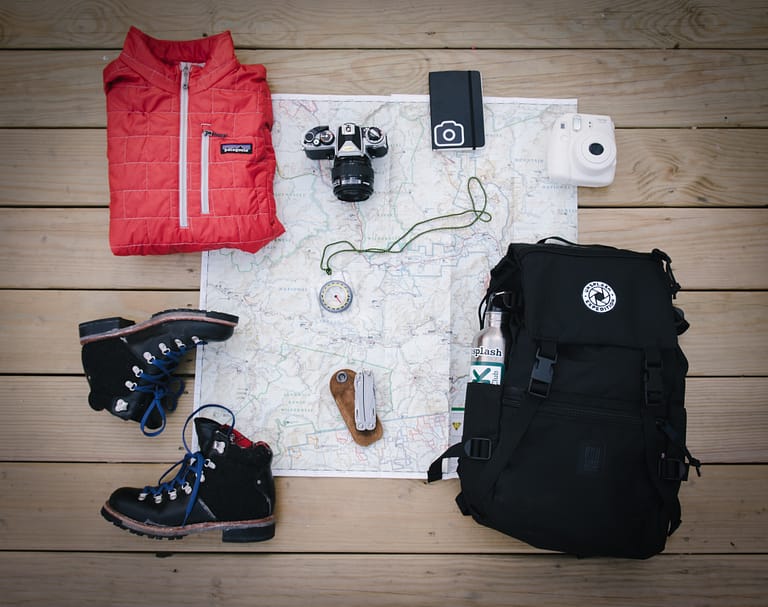Are you new to hiking and feeling overwhelmed by all the gear options? Don’t worry; I’ve got you covered. In this guide, we’ll break down the essential hiking gear every beginner needs to hit the trails confidently. From sturdy footwear to reliable navigation tools, we’ll walk you through everything you need to make your first hiking adventure successful. So, let’s gear up and get ready to explore the great outdoors!
Understanding the Basics of Hiking Gear
Before embarking on any hiking adventure, understanding the basics of hiking gear is essential to ensure a safe and enjoyable experience. Your choice of equipment can significantly impact the overall success of your hike, making it necessary to familiarize yourself with the essentials.
Footwear
Selecting appropriate footwear is crucial for a successful hike. Hiking boots or shoes with good ankle support, durable outsoles, and waterproofing are recommended. Ill-fitting footwear can lead to discomfort and blisters, potentially cutting your hike short.
Comfortable and Supportive Footwear: The foundation of a great hiking experience starts with your footwear. Invest in hiking shoes or boots with excellent support and traction for stability and comfort on all terrains, like the following:
KEEN Men’s Targhee 2 Mid-Height Waterproof Hiking Boots
Columbia Men’s Fairbanks Mid Hiking Shoe
Clothing
Choosing the proper hiking clothing can mean an enjoyable outing and an uncomfortable experience. Opt for moisture-wicking and breathable fabrics to keep you dry and comfortable. Layers are also important for temperature regulation.
RevolutionRace Women’s Nordwand Pro Pants, Durable and Ventilated Pants for All Outdoor Activities
OTU Men’s Lightweight Waterproof Hooded Rain Jacket Outdoor Raincoat Shell Jacket for Hiking Travel
Navigation
Carrying navigational tools such as a map, compass, or GPS device is essential for staying on track during a hike. Knowing how to use these tools effectively can prevent getting lost and aid in returning to safety.
Garmin 010-02256-00 eTrex 22x, Rugged Handheld GPS Navigator
Midland T77VP5 X-TALKER Long Range Walkie-Talkie FRS Two-Way Radio
Backpack
Investing in a good-quality backpack is crucial for carrying all your essentials comfortably. Look for a bag with padded shoulder straps, a hip belt for weight distribution, and multiple compartments for organization.
Bseash 50L Hiking Backpack, Water Resistant Lightweight Outdoor Sport Daypack Travel Bag
Hydration and Nutrition
Staying hydrated and well-nourished is vital during a hike. Packing a reusable water bottle or hydration bladder and energy-boosting snacks can help sustain your energy levels throughout the journey.
Safety Essentials
Carrying safety essentials such as a first aid kit, emergency whistle, and multi-tool can provide peace of mind and preparedness for unexpected situations during the hike.
By familiarizing yourself with these basics of hiking gear, you’ll be better equipped to embark on your outdoor adventures with confidence and readiness.
Footwear: Your Foundation for the Trails
Before hitting the trails, you must equip yourself with the right pair of footwear. Choosing between hiking boots and trail shoes, finding the perfect fit, and ensuring your footwear is broken in can significantly impact your hiking experience.
Hiking Boots vs. Trail Shoes
Hiking boots are known for their ankle support and durability, ideal for challenging terrains and long hikes. On the other hand, trail shoes are lighter, more flexible, and offer breathability, making them a popular choice for beginner hikers and day trips. Consider the type of trails you’ll be exploring and the level of ankle support you require when deciding between these options.
Importance of the Right Fit
Ensuring your hiking footwear fits appropriately is paramount. Ill-fitting footwear can lead to discomfort, blisters, and even injuries. When trying hiking boots or trail shoes, consider the toe box width, arch support, and overall comfort. Additionally, it’s crucial to account for any potential foot swelling during long hikes, especially in warmer weather.
Breaking in Your Hiking Footwear
Before embarking on a hiking adventure, take the time to break in your hiking footwear. Wear them around the house, on short walks, and gradually increase the duration to allow your feet to adapt and the shoes to mold to your foot shape. This process can help minimize the risk of discomfort and blisters during your hikes.
 Photo by Andrew Neel
Photo by Andrew Neel
Backpack Essentials for Hiking Beginners
Having the right gear is essential for an enjoyable and safe hiking experience. A reliable backpack is one of the most critical equipment for any hiker. Choosing the right hiking backpack, knowing how to pack it efficiently, and understanding hydration systems are crucial for beginners venturing into the hiking world.
Choosing the Right Hiking Backpack
Selecting the right backpack is crucial for comfort and functionality during a hike. Consider factors such as capacity, fit, and features. A properly fitted pack can minimize strain on the body, allowing for a more enjoyable trek. Look for adjustable straps, padded hip belts, and ventilation systems to ensure a comfortable fit.
 Photo by Lan Yao
Photo by Lan Yao
How to Pack Efficiently
Efficient packing is crucial for maintaining balance and comfort while hiking. Distribute weight evenly and pack heavier items closer to the back. Use compartments and pockets to organize gear and keep frequently needed items easily accessible. Utilize compression straps to secure the load and maintain stability.
Hydration Systems for Hikers
Proper hydration is vital during a hike. Invest in a hydration system such as a hydration bladder or water bottles designed for hiking. These systems allow easy access to water, keeping you hydrated during the trek without constantly stopping to retrieve a water bottle from your backpack.
Remember, having the right backpack and packing essentials can make all the difference during a hike, especially for beginners. Choose wisely and pack smartly for a comfortable and enjoyable adventure.
Navigation Tools for Safe Hiking
Whether you’re embarking on a leisurely trail or a more challenging route, having the right navigation tools is crucial for a safe and enjoyable hiking experience. Hikers can confidently navigate through varying terrains and weather conditions using a map and compass with the latest technology.
Using a Map and Compass
Mastering a map and compass is essential for hikers, especially in areas with limited GPS signals or in the event of electronic device failure. A topographic map provides valuable information about the terrain, including elevation changes, landmarks, and potential water sources. When used in tandem with a compass, hikers can determine their exact location and plot the most efficient route to their destination. Learning to read contour lines and understand magnetic declination is fundamental to effectively using a map and compass.
The Role of Technology
While traditional navigation tools remain invaluable, technology has revolutionized how hikers navigate the great outdoors. GPS devices, smartphone apps, and wearable fitness trackers with GPS capabilities offer real-time location tracking, trail mapping, and geotagging features. These tools provide hikers instant access to precise coordinates, trail conditions, and emergency assistance services. However, it’s important to note that relying solely on electronic devices is not foolproof, as battery life, signal reliability, and device malfunctions can pose challenges.
 Photo by Joshua Woroniecki
Photo by Joshua Woroniecki
Combining traditional navigation tools and modern technology maximizes a hiker’s preparedness and safety, ensuring they can confidently explore new trails while mitigating navigational uncertainties.
Dressing for the Outdoors
Dressing appropriately is crucial for a comfortable and safe experience when heading out for a hike. Layering techniques, weatherproof clothing and accessories, and sun protection are essential components to consider.
Layering Techniques
Layering is essential to staying comfortable during hikes. Start with a moisture-wicking base layer to keep sweat away from your skin. Add an insulating layer to retain body heat, and finish with a waterproof and breathable outer layer to shield against wind and rain. This versatile approach lets you adjust your clothing according to changing weather conditions and exertion levels, ensuring you stay dry and warm throughout your hike.
 Photo by Luis del Río
Photo by Luis del Río
Weatherproof Clothing and Accessories
Invest in quality waterproof and windproof jackets, pants, and hiking boots to protect yourself from the elements. Additionally, consider packing a compact umbrella, waterproof backpack cover, and quick-drying microfiber towels to stay dry and comfortable during unexpected rain showers or wet trail conditions.
Protecting Yourself from the Sun
While enjoying the outdoors, you must shield yourself from the sun’s harmful rays. Wear a wide-brimmed hat with UV-protective sunglasses, and apply sunscreen with an SPF of 30 or higher. Lightweight, long-sleeved shirts and pants with built-in UPF protection offer an extra layer of defense against sun exposure, reducing the risk of sunburn and heat-related illnesses during your hike.
 Photo by Tima Miroshnichenko
Photo by Tima Miroshnichenko
Nutrition and Hydration on the Trail
When hitting the trails, ensuring proper nutrition and hydration is crucial. Your body’s performance and overall well-being depend on the fuel and hydration it receives. Inadequate nutrition can lead to a higher risk of injury and hinder your body’s ability to adapt and heal. Here’s a look at essential nutrition and hydration aspects on the trail.
 Photo by Krivec Ales
Photo by Krivec Ales
Snacks and Meals for Energy
Consuming energy-boosting snacks and meals is vital before, during, and after your hike. Opt for easily packable, nutrient-dense snacks like nuts, trail mix, granola bars, and dried fruits. These provide a quick energy boost and are convenient for on-the-go consumption. Pack lightweight, high-protein meals for longer hikes to sustain energy levels. Consider dehydrated meals, nut butter sandwiches, or wraps with lean protein and whole grains.
Water Purification Methods
Access to safe drinking water is essential for staying hydrated on the trail. Depending on the availability of freshwater sources, hikers should be equipped with reliable water purification methods. Portable water filters, purification tablets, or UV purifiers are standard options for treating water from streams, rivers, or lakes. Researching and understanding the water sources along the trail is crucial to determine the most suitable purification method for your hiking adventure.
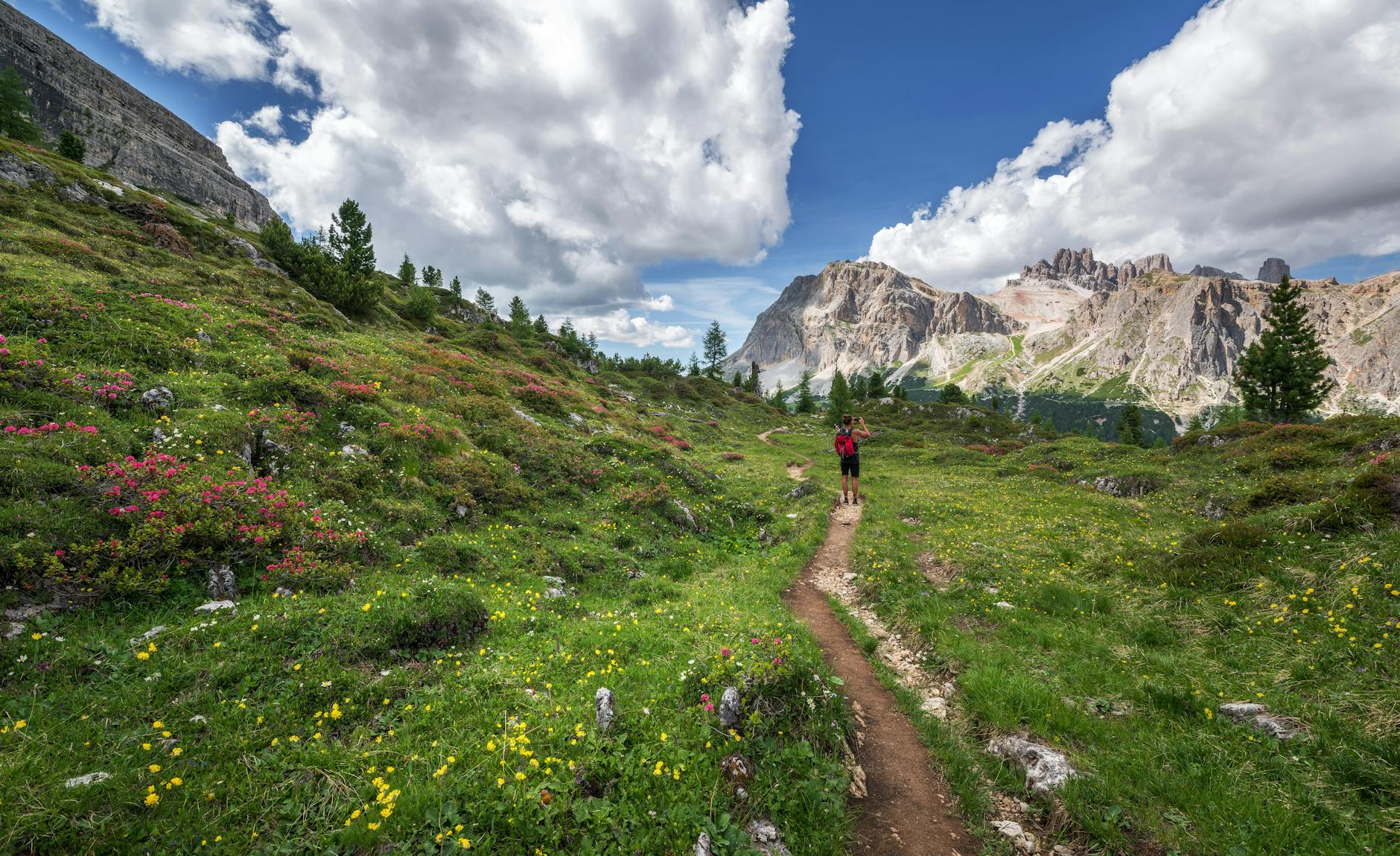 Photo by Krivec Ales
Photo by Krivec Ales
Safety Gear and First Aid
When heading out on a hike, it’s crucial to pack safety gear and first aid essentials to ensure preparedness for any unexpected situations. Here are some essential items to consider.
Building Your First Aid Kit
A well-equipped first aid kit is a must for any hiking trip. It should include essential items such as adhesive bandages, gauze pads, antiseptic wipes, adhesive tape, tweezers, scissors, and pain relief medication. Additionally, consider including items specific to your destination, such as insect sting relief pads or a snakebite kit if hiking in areas with venomous snakes.

Photo by Roger Brown
Emergency Shelter
Carrying a lightweight emergency shelter, such as a compact tent or a thermal blanket, can provide vital protection in case of sudden changes in weather or any unexpected overnight stays. It’s a simple yet essential piece of gear that can make a significant difference in an emergency.
Signaling Devices
In the event of getting lost or needing assistance, signaling devices like whistles, signal mirrors, or brightly colored rescue flags can help attract attention and alert others to your location. These simple tools can be invaluable in communicating distress and summoning help when needed.
By ensuring you have these safety gear and first aid essentials, you can better safeguard yourself and your hiking companions and be prepared to handle unexpected challenges during your outdoor adventures.
The Ten Essentials: A Comprehensive Checklist
Before embarking on a hike, having the necessary supplies to ensure safety and preparedness is crucial. The Ten Essentials originated in the 1930s and has since evolved into a comprehensive checklist of items essential for outdoor excursions. Customizing the Ten Essentials to fit the specifics of your trip is crucial in guaranteeing a successful and safe journey.
The History Behind the Ten Essentials
The concept of the Ten Essentials was first introduced in the 1930s by a group called The Mountaineers, who initially outlined a list of essential items necessary for safe and enjoyable mountain travel. Over time, the concept expanded to include navigation tools, sun protection, insulation, and emergency supplies. This evolution reflects the changing landscape of outdoor activities and the increased focus on safety and preparedness.
Customizing the Ten Essentials for Your Trip
While the general principles of the Ten Essentials remain consistent, it’s essential to customize the specific items based on the unique aspects of your hiking trip. Weather, terrain, duration, and group size should all be considered when tailoring the Ten Essentials for your needs. For instance, a winter hike may require additional insulation and traction devices, while a summer hike may prioritize sun protection and extra water.
 Photo by Taryn Elliott
Photo by Taryn Elliott
Additional Handy Tools and Gadgets
Before hitting the trails, it’s essential to pack some additional tools and gadgets to ensure a safe and enjoyable hiking experience. Here are some handy items to consider bringing along:
Multi-tools and Repair Kits
Carrying a multi-tool kit can be a real game-changer on the trail. These compact devices typically include knives, screwdrivers, scissors, and other useful implements, allowing you to handle various repair tasks and unexpected situations. They are invaluable for fixing gear, cutting bandages, or even opening a stubborn food package. A repair kit with duct tape, zip ties, and a sewing needle can also come in handy for quick fixes to gear and clothing, helping you stay prepared for any mishaps.
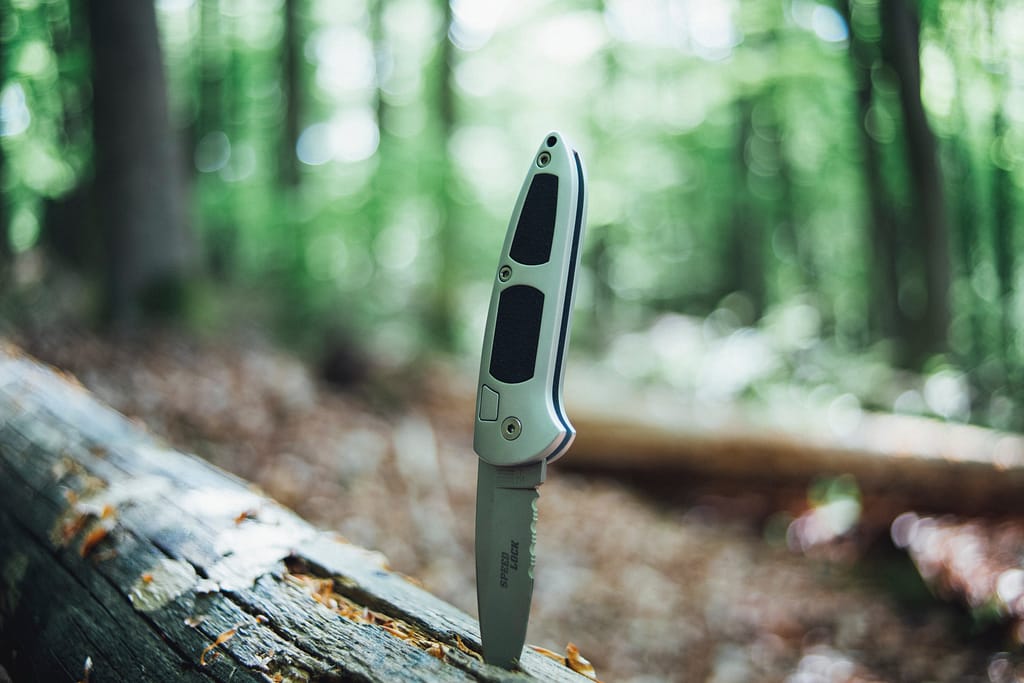
Photo by Markus Spiske
Trekking Poles
Trekking poles, also known as hiking poles or walking sticks, can provide stability and support, especially on challenging terrain. They can help reduce the strain on your knees, improve balance, and provide additional power when ascending steep slopes. Additionally, they can be used to probe challenging areas, clear spider webs, or provide added leverage when crossing streams. When not in use, many poles can be collapsed and stored on a backpack, making them convenient and versatile accessories for hikers of all levels.

Photo by Yaroslav Shuraev
Leave No Trace: Hiking Responsibly
When venturing into the great outdoors, adopting Leave No Trace principles is crucial to minimize your environmental impact. These principles provide a framework for responsible outdoor ethics, ensuring the preservation of natural spaces for future generations.
Respecting Wildlife and Nature
Respecting wildlife and their natural habitats is essential when hiking. Avoid disturbing or approaching animals, and observe them from a safe distance. Refrain from feeding wild animals, as it can disrupt their natural foraging behaviors and lead to dependence on human food sources. Additionally, be mindful of the plants and ecosystems you encounter, staying on designated trails to prevent habitat destruction.
 Photo by Andreas Schnabl
Photo by Andreas Schnabl
Minimizing Your Impact While Hiking
Minimizing your impact while hiking involves adhering to practices that reduce environmental harm. Dispose of waste responsibly by carrying out all trash, including food scraps and biodegradable items. When nature calls, follow proper waste disposal guidelines to prevent water contamination and soil pollution. Moreover, refrain from defacing natural features or leaving behind any non-biodegradable materials.
By practicing these Leave No Trace principles, hikers can contribute to preserving pristine wilderness areas and ensure that the natural environment remains unspoiled for all to enjoy.
Leave No Trace provides comprehensive resources and educational materials to support responsible outdoor recreation, empowering hikers to make environmentally conscious choices during their excursions.
FAQ
If you’re new to hiking, you might have many questions about gear, safety, and preparation. Here, we address some frequently asked questions to ease any uncertainties and help you feel confident as you embark on your hiking journey.
What are the essential items to pack for a beginner’s day hike?
Having the right gear is crucial when setting out for a day hike. Fundamental essentials include proper footwear such as sturdy hiking boots or shoes with good traction, weather-appropriate clothing, a comfortable backpack, a map and compass or a GPS device, sufficient food and water, a first-aid kit, and a multi-tool or knife. These items will ensure a safe and enjoyable hiking experience.
How should I choose the right backpack for hiking?
Selecting the right backpack is vital for comfort and functionality. Consider capacity, fit, and features like padded straps and multiple compartments. It’s also important to try on various options to find the one that best suits your body type and hiking needs.
What type of footwear is best for beginner hikers?
Choosing the proper footwear is essential for a successful hike. Hiking boots provide ankle support and protection on rugged trails, while hiking shoes offer a lighter and more flexible option for less strenuous terrains. It’s crucial to prioritize comfort and fit to prevent discomfort and blisters.
How can I ensure my safety on the trail?
Prioritizing safety is fundamental when hiking. Always inform someone about your hiking plans, stay on designated trails, be aware of wildlife and potential hazards, and familiarize yourself with basic first-aid procedures. Additionally, carrying a whistle, a headlamp, and a fully charged phone can be invaluable in emergencies.
What are some common mistakes to avoid when hiking?
New hikers often make the mistake of overpacking, underestimating the trail difficulty, and not considering weather changes. Ensuring proper preparation, packing the essentials, and researching the chosen trail beforehand can help mitigate these common errors.
Conclusion
In conclusion, investing in essential hiking gear is crucial for beginners to ensure a safe and enjoyable outdoor experience. Hikers can confidently embark on their adventures with peace of mind by prioritizing items like proper footwear, navigation tools, hydration supplies, and protective clothing. It’s important to remember that quality gear enhances comfort and promotes safety on the trails. As beginners progress in their hiking journey, they can gradually expand their gear collection based on their specific needs and preferences. Happy hiking!

